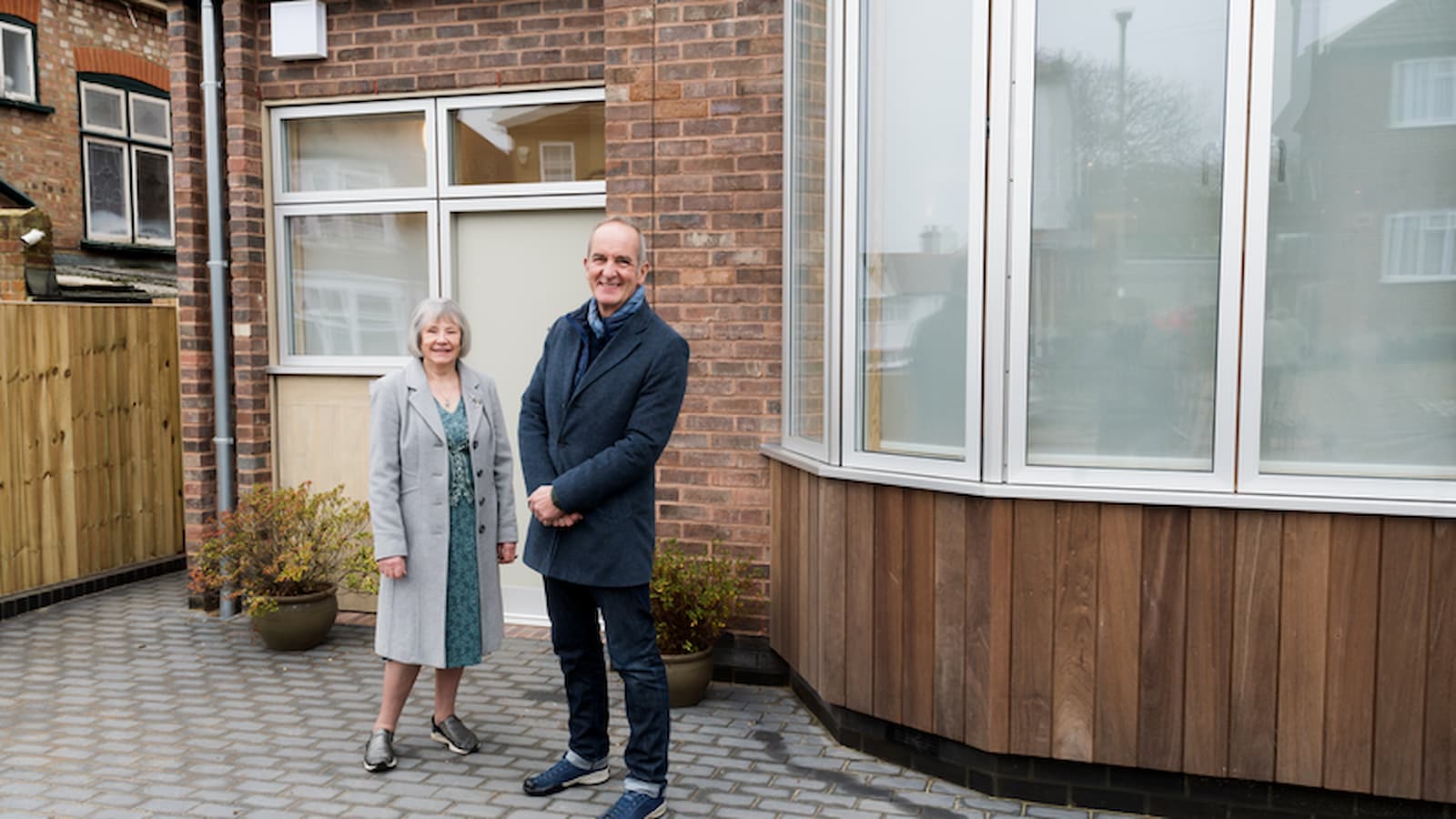If you buy a plot with planning permission, can you build something else?
Buying a plot with planning permission already agreed can be a plus, but if you want to change things, it’s important to know the pitfalls

If you are buying a plot with planning permission, you may be able to build something else – but it isn't always easy to do.
It's important to know that different types of planning permission apply to building plots too, making it either easier or harder to make changes to the original consent. And, when making changes or applying for new consent entirely, there can still be risks.
Not making changes when it comes to buying a building plot with planning permission come with a time warning too, as planning permissions are only normally valid for three years from the date of being granted. If buying a building plot with permission that is approaching deadline, you’ll need to pay special attention to timings.
Here we ask the experts about what you need to know when making changes to plans, when planning permission has already been granted.
Outline vs detailed planning consents

Subscribe to Plotfinder.net to access over 15,000 building plots and properties that could become your next project
The first priority is to find out what kind of planning permission – also known as ‘planning consent’ – you have.
“If it's outline planning, the final design details are not yet defined, merely the principle and theme of what is to be built,” explains land acquisition specialist, Liz Williams. “This kind of consent has ‘reserved conditions’ to ‘discharge’, which deal with the more defined design.”
Put simply, this means that the planners need more details to approve, and agree, before you can start work. “Where you want to alter things, this can be very useful as you can have more liberty to change the concept,” says Liz. “However, you will need to submit detailed design drawings, and this almost always requires a RIBA Architect."
If the agreed permission is ‘detailed planning consent’ you may face more resistance from the planning authority if you want to move away from the original plans. “If the changes aren’t huge, you can apply for ‘non-material amendment’ or a ‘minor material amendment’, which has a 28-day decision deadline,” Liz explains. “But if your changes are considered too far from the original consent you will be required to submit a fresh application.”

Liz Williams has spent more than 30 years working in housing, land, housebuilding, construction and property. Liz currently sits on the Housing and Communities Board of the Centre for New Midlands Think Tank and offers private consultancy to land and property owners, purchasers, landlords and developers.
‘Non material’ and ‘minor material’ amendments
Minor alterations are usually covered by ‘non-material’ amendments. These would be small design tweaks that do not materially affect the appearance or functionality of what you’re building.
Slightly confusingly, more significant alterations come under what’s known as ‘minor material amendment’. “This allows for modifications that do not fundamentally alter the original approval but may involve adjustments such as small extensions, repositioning of windows, or different materials,” explains planning consultant, Simon Rix.
The planning authority will consider such proposed modifications carefully to assess whether the changes can still be allowed under the agreed permission.
Both ‘non-material’ and ‘minor material’ amendments come under Section 73 of the Town and Country Planning Act.

Simon Rix is a professional planning consultant, who began his career working in local government in the 1990s. He was a council officer and later an elected councillor, so he knows how the planning system works from both sides. He went on to set up Planix UK Planning Consultants Ltd; a consultancy company that advises self builders, home extenders and those taking on small to medium-sized building projects on planning permission.
Weighing up whether to deviate
Before making changes to an already approved planning application, it is vital to consider whether the benefits outweigh the potential risks.
“One of the first questions to ask is why the change is necessary,” says Simon Rix. “If the modification is purely for aesthetic reasons or to slightly improve functionality, it may not be worth the additional time and cost involved in securing approval.”
However, if the change is essential due to structural, financial, or practical concerns, then pursuing an amendment may be the right choice.
As well as the time factor, there are financial implications to think about. A new submission may involve further planning permission fees, updated architectural drawings, and possibly additional assessments, all of which add to your overall costs and should make you question if change is worthwhile.
It is also important to check whether the proposed changes will still comply with planning policies and guidelines. If a revision significantly alters the scale, appearance, or impact of the project, it may face objections from neighbours or scrutiny from planning officers.

Why you need professional advice
If you want to go ahead and make changes, you’ll need professional advice on redesign, shapes, sizes and materials.
Liz Williams says that whilst one option is to find an architectural technician to undertake the work, her advice is to always find a RIBA architect.
This is because they hold professional indemnity insurance, to cover any design issues going forward, will provide defined design stages for payment of fees, and work to an industry code of conduct. If any problems do occur, there is also a recognised adjudication process.
Also, although an architect can submit plans on your behalf, it’s becoming the norm to have a planning consultant on board too, to ensure any challenges are dealt with in advance and the planning process goes as smoothly as possible.
“This all can be very stressful if you are emotionally attached or financially reliant on the outcome,” says Liz. “My best advice is to pick the right professionals to help you navigate the system.
"Make sure they are indeed registered professionals, by checking their membership with their professional body and asking for a copy of their professional indemnity insurance. Always get quotes and terms of engagement and never issue instructions without defined terms and costs.”
Changing plans
Your approach to changing plans will depend on whether you’re making changes to an existing approval, or resubmitting a fresh set of plans, says Simon Rix.
If the modifications are significant, a completely new planning application will be required. This is often the case for projects where size, layout, or use is being altered in a way that goes beyond the original approval.
“In such cases, it may be beneficial to seek pre-application – known as ‘pre-app’ – advice from the planning authority before formally submitting new plans,” he explains. “This can help clarify whether the proposed changes are likely to be accepted and whether any additional reports or assessments will be needed.”
Timescales
‘Non material’ and ‘minor material’ amendments should be dealt with quickly, within the 28-day deadline.
However, if after taking professional advice, you decide that the only option is to re-submit a fresh set of plans, dig in for the long haul; it’s going to add a significant delay of months, even years, to your project.
Line up your team, by all means, but it’s advisable not to book in any construction work until the new permission has been approved.
“A resubmitted planning application has to go back through the entire process from scratch,” says Liz Williams. “The current government-defined deadlines are ‘13 weeks for applications for major developments, eight weeks for all other types of development. However, these are not a fair representation.”
The following issues can hold up progress, including reworking drawings with your architect and going through the ‘pre-app’ process which is essentially a meeting with the planners prior to application to talk through what you want to do.
“It's not compulsory, and comes with a fee,” says Liz. “But increasingly if you don't do this, the planners tend to not view your application favourably.” The wait time for this is several weeks after submitting your request and fee, which will typically be from £50 to £500, but can be more, depending on the scale of your project.
Producing all the supporting documentation and reports can take over a year, Liz warns: “For example, ecology surveys such as bat surveys, if required, can only be carried out within certain periods of a year and can hold you back, plus they expire after one year.”
Other aspects that might require reports and assessment could include access for the project, and impact on local heritage.
Getting changes accepted
Getting your application accepted as ‘valid’ can take many weeks whilst all the plans and supported documents are ‘validated’ by the planning authority.
Once valid, the planning authority will follow protocol to decide if your application can go down the quicker route of ‘delegated powers’ or ‘scheme of delegation’. This is when just a planning officer will decide on your application rather than it going to a full planning committee meeting. A full planning process will take much longer as it goes through a longer public consultation period and will be discussed at a full committee.
Once you know which route the planning officer is following, the public consultation period has to happen. Normally for a single dwelling this is a minimum of 21 days.
If you get through the 21 days without objections your planning officer can then make a ‘delegated’ decision and should do so within eight weeks.
However, if your scheme receives a certain amount of objections (this can vary, depending on local rules), or more information is required it can take longer, or be referred to the planning committee for decision within 13 weeks.
“It is very common not to get your decision within the 13 weeks,” says Liz Williams. “All sorts of things can happen, often linked to local politics. You can after the 13 weeks appeal on "non determination" [when the planning authority fails to make a decision on a planning application within the legally set time limit] but that can be complex and take longer than waiting.”
“If you end up with a refusal, an appeal can take up to around two years and thousands, if not tens of thousands in legal costs,” Liz adds.
Why resubmissions can result in rejection
“There is no guarantee that the new submission will be accepted,” says Simon Rix. “In many cases, a resubmission triggers a new round of public consultation, meaning that neighbours and local stakeholders will have another opportunity to comment on the changes. If the amendments are seen as contentious, they could attract objections that were not present in the original application.”
There’s also the risk of rejection. “Planning policies evolve, and circumstances can change between the approval of an original application and the submission of amendments,” says Simon. “Just because an initial design was permitted does not mean that a modified version will automatically receive the same treatment. Planners may reassess aspects of the development that were previously accepted, particularly if new local policies or guidelines have come into effect.”
Each project is different. For some, sticking with the existing approval may be the most efficient and least disruptive option. However, if the benefits of a revised design outweigh the potential complications, then it is usually worth going ahead.
FAQs
Does existing planning permission make it easier to build what you want?
So, the big question. Does an existing planning permission make it easier, or more difficult to build what you personally want?
“A ‘ticket’, as it is generally referred to in the property world, does normally mean it is easier to go in with a fresh application,” says Liz Williams. “The fresh application will be tended to be viewed favourably, if it sticks to the same main principles, for example, residential, and it will take a certain form, such as traditional, ‘in keeping’, contemporary, exceptional. If the principle is already established, it is very difficult for a planning authority to then rescind that precedent.”
If you are refused permission for your new scheme, you can justifiably argue that a principle had already been established. “If you then appealed to the Planning Inspectorate to have the refusal overturned, the Inspector is much more likely to award you consent and costs to you,” says Liz. “This can cost planning authorities tens of thousands of pounds they cannot justify spending or afford.”
When you buy a building plot with permission attached, you might find your self build project a lot easier. But if this won’t bring you the new home you want, be prepared to put in the legwork in order to fulfil your dream as well as thinking about the additional building plot costs.

Get the Homebuilding & Renovating Newsletter
Bring your dream home to life with expert advice, how to guides and design inspiration. Sign up for our newsletter and get two free tickets to a Homebuilding & Renovating Show near you.
